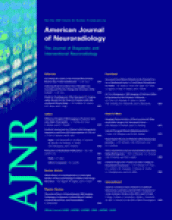Abstract
BACKGROUND AND PURPOSE: The callosal disconnectivity theory was previously proposed to explain the pathophysiology of schizophrenia. The goal of this study was to investigate the metabolic integrity of the corpus callosum in patients with schizophrenia by proton MR spectroscopy.
MATERIALS AND METHODS: Twelve first-episode and 16 chronic patients meeting the Diagnostic and Statistical Manual of Mental Disorders (DSM-IV) criteria for schizophrenia and 28 age- and sex-matched control subjects were enrolled in the study. We measured the absolute concentrations of neurometabolites and T2 relaxation times of tissue water (T2B) in the genu of the corpus callosum by using the internal water-reference method. The severity of symptoms in patients was rated by means of psychopathology scales. Differences in neurometabolite concentrations and T2B values between the patients and control subjects were assessed. We also investigated the correlation of metabolite concentrations with the severity of symptoms.
RESULTS: N-acetylaspartate (NAA) concentrations were significantly lower in the first-episode as well as in chronic patients, compared with respective control subjects (P < .001). NAA concentrations in the first-episode and chronic patient groups were negatively correlated with both the Brief Psychiatry Rating Scale and the Scale for Assessment of Negative Symptoms scores (P < .001). There was a significant negative correlation between the NAA concentrations and the Scale for Assessment of Positive Symptoms scores in all patients (P = .028). T2B values were significantly higher in the patients, compared with the control subjects (P < .001).
CONCLUSION: Decreased NAA concentration in the corpus callosum correlates with psychopathology in schizophrenia. This finding, together with prolonged T2B values of the corpus callosum, supports the previously proposed callosal disconnection theory concerning the pathophysiology of schizophrenia.
- Copyright © American Society of Neuroradiology












